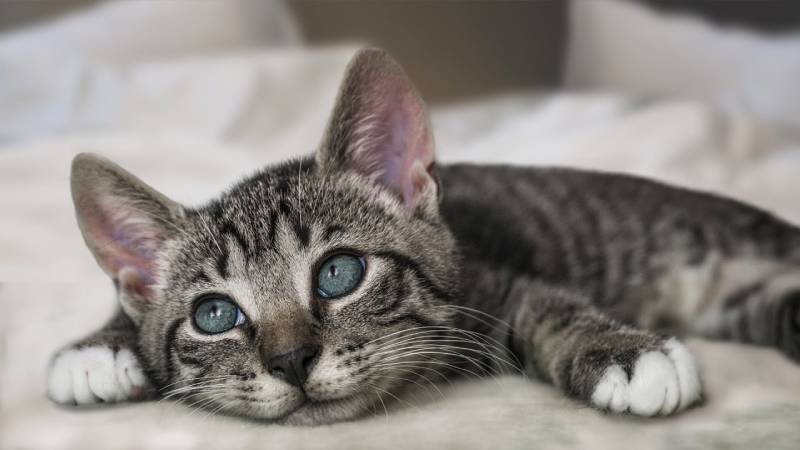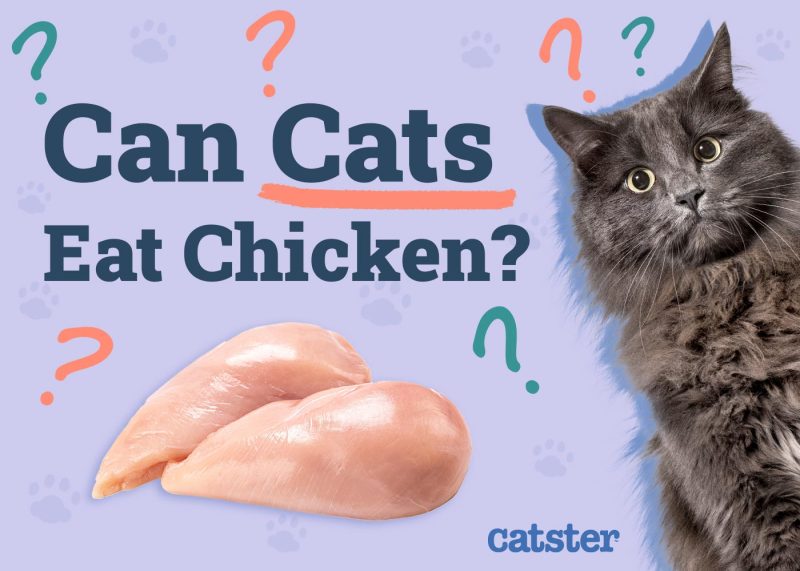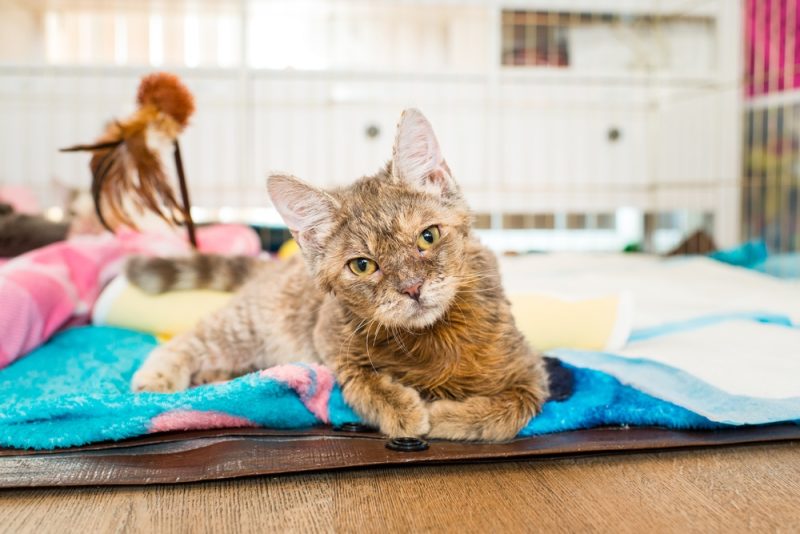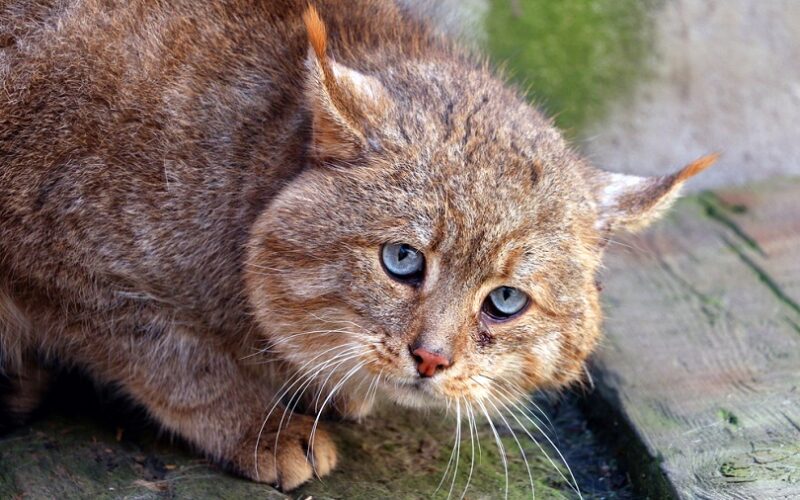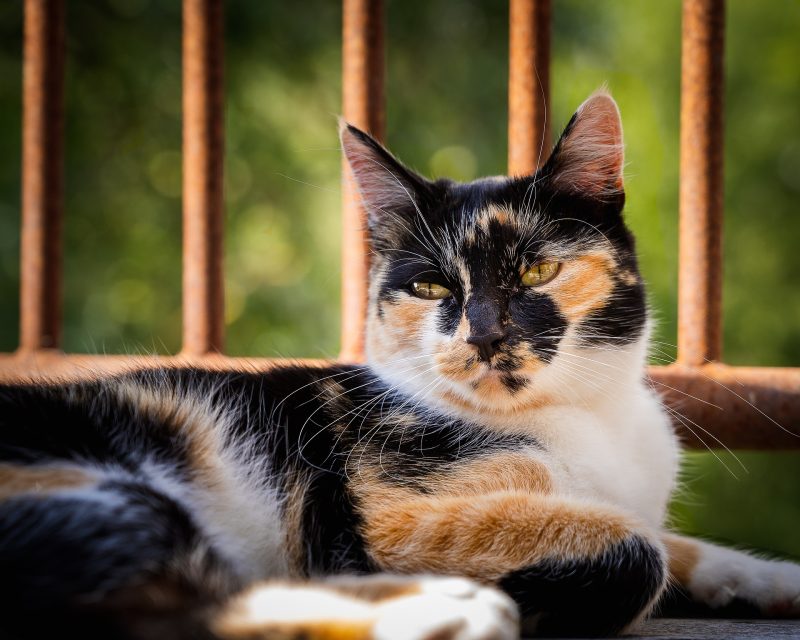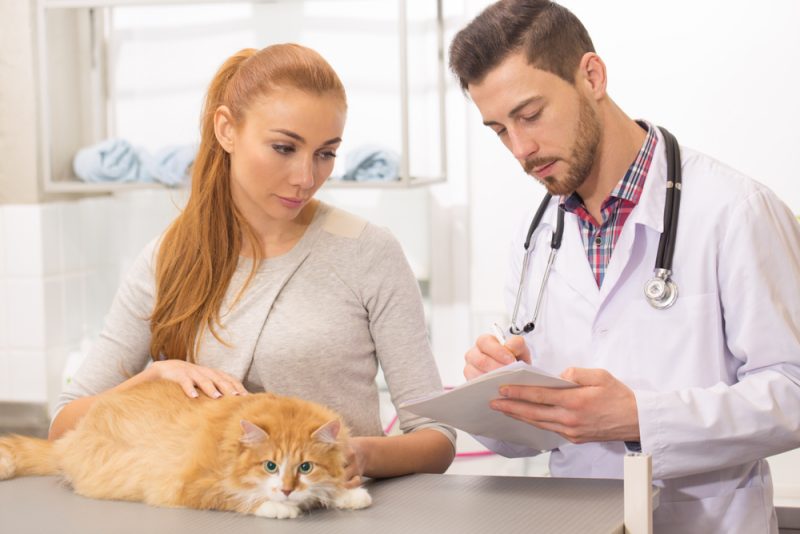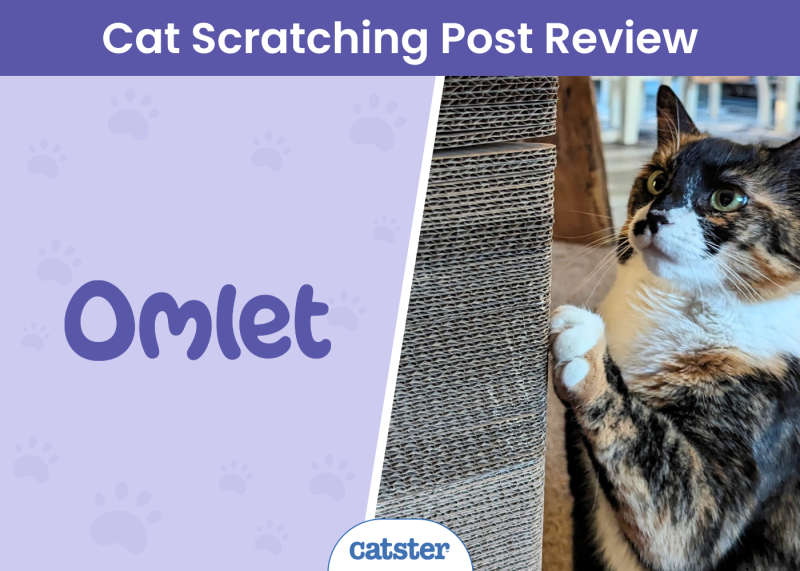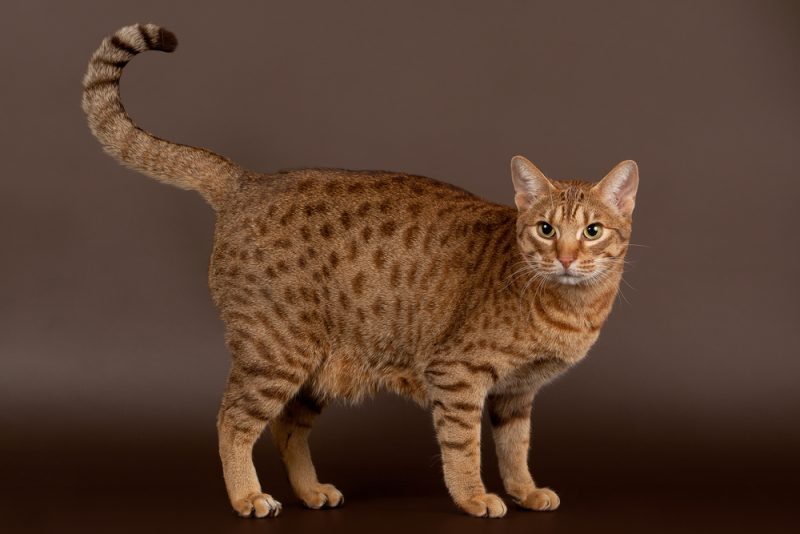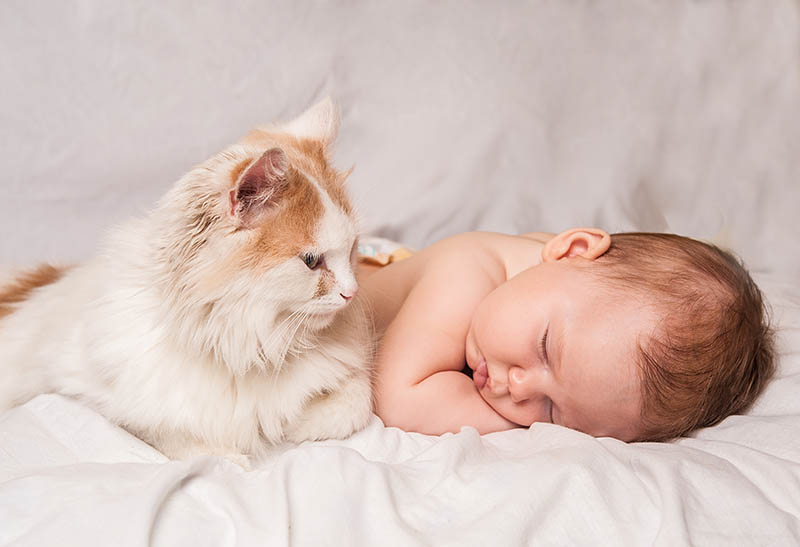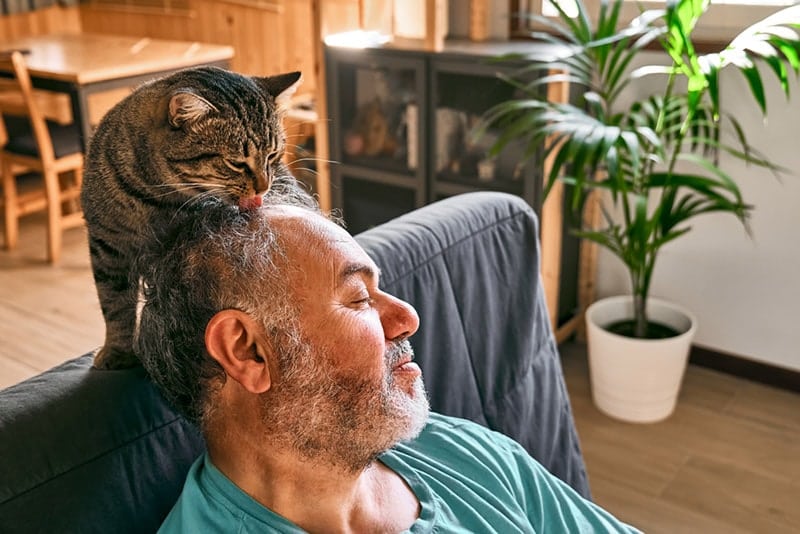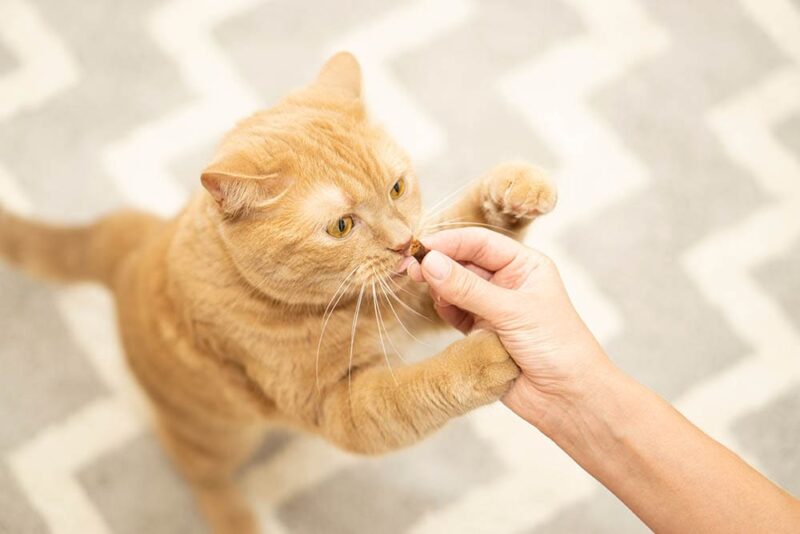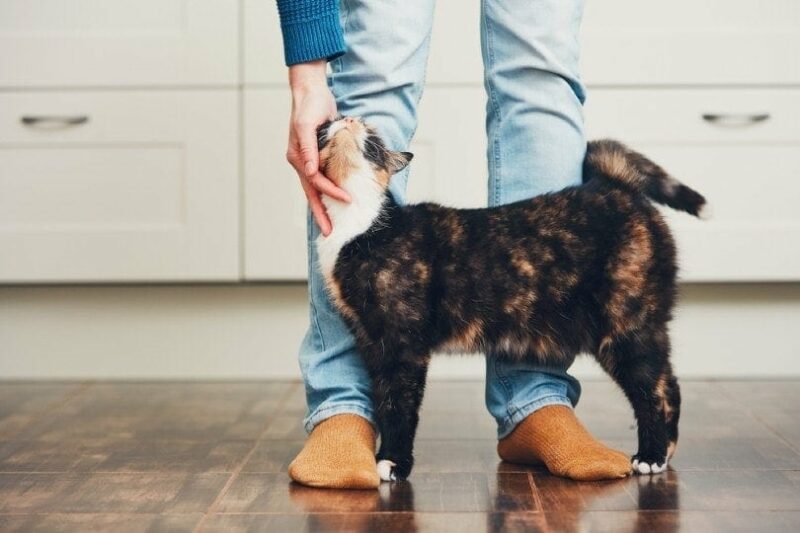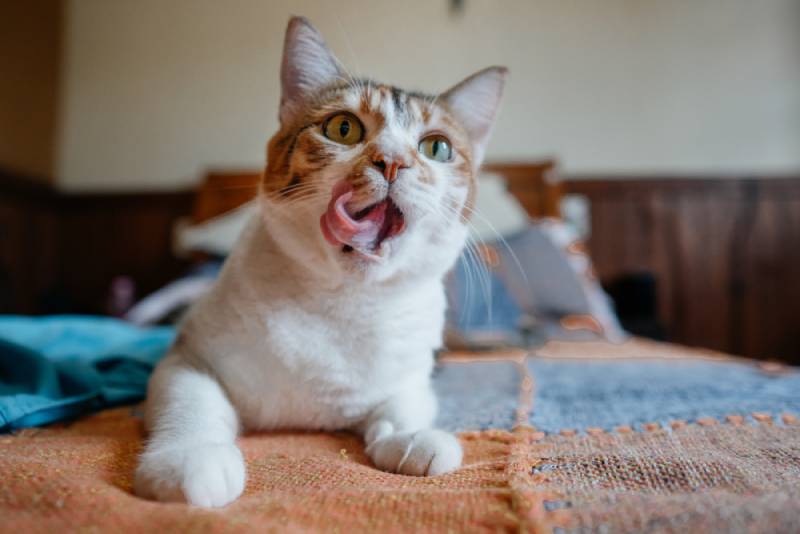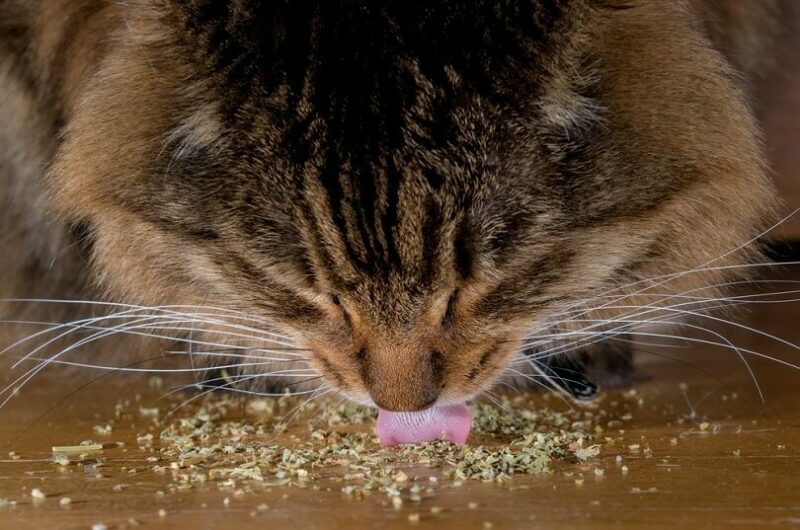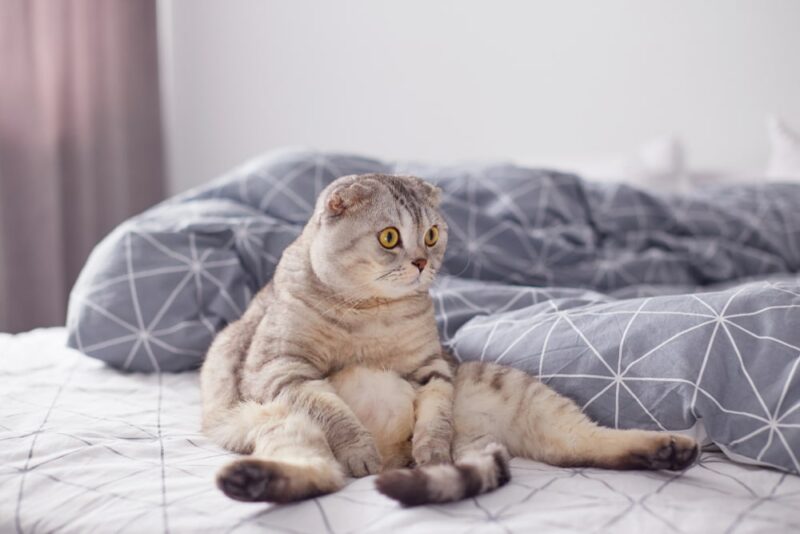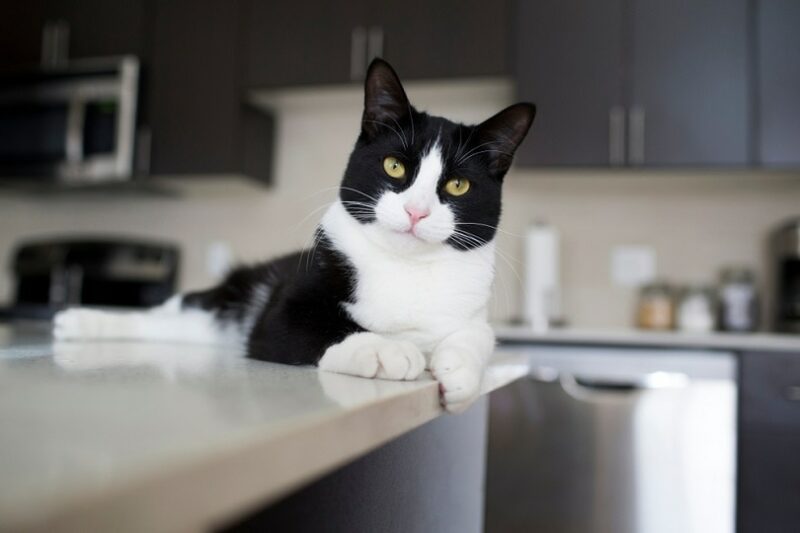Cats are simply adorable, as any cat lover would agree. They do so many cute things all the time; sometimes, you just want to squeeze them to death. If you have a cat, you can’t choose just one thing you love most.
In this article, we’re going to go over tons of interesting and fun things that make your cat, and many other felines, so stinking irresistible.

The 15 Adorable Things Cats Do
1. Sit Like Hooman
Isn’t it the most adorable thing ever to have your cat sitting like they are a regular person. They just look so dapper and serious. This particular kitty is really leaning into that table. It couldn’t look more adorable. I wonder what he’s thinking?
2. Striking a Pose
Sometimes, we are just naturally photogenic, and sometimes, we snap a picture at just the right time period. In any case, how adorable is it when our cats give us what seems like an intentional pose? This is certainly one of the cutest cats I’ve ever seen! Any cat lover would agree.
3. Hugs for Days
Who could resist this adorable photo? These two kitties are giving each other a warm, loving embrace. Whether it was a coincidence, or these two siblings were really showing some love, we can appreciate this moment captured on film.
4. Weird Relaxing Spots
We’ve all seen our cats pick the most ridiculous places to nap. But it seems like every time they do, it gets cuter! Not to mention, it can give you a giggle. Our cats certainly are strange critters.
5. Criss-Cross
Look at this adorable kitten, looking like a modern-day gentleman or lady. It’s so adorable when cats put their paws on top of each other. It makes them look very sophisticated and adequately posed. Just look at those perfect toe beans and tell me you can resist!
6. Chilling in Boxes
It’s cute enough when cats get into a box by themselves, but even more so when there’s a dangerously cute duo! Those two kitties look snug as a bug and a rug. Just look at those eyes! Who wouldn’t absolutely melt upon taking this photo?
7. Big Yawns
Is this kitten a member of Kiss? They look quite natural on camera, and it’s ever-so-cute when we catch our kitties making a big yawn! This little guy really steals the show with his impressively photogenic poses.
8. Tongues Out
Are you being teased by a creature so cute? This blue-eyed kitty is taunting you in the most adorable ways. The disrespect is allowed in this instance because how could you be mad at a face like that?
9. Pumping Iron
This broseph is really working his muscles! Or maybe it’s curls for the girls, who can be sure? One thing is for certain, this is the shot of a lifetime. Plus, if you keep scrolling, you get to see several more cute pictures. How many times have you caught your own cat doing things like this?
10. Selfie Time
Who says our cats can’t take selfies too? Has your kitty ever shown interest in your cellular device? It looks like this kitty wanted to control his destiny, making sure the selfie shot was perfect. They must not trust their human’s photographic skills.
11. Big, Innocent Eyes
Have you ever looked at your cat, and they’re giving you great big eyes. You get so excited with their little faces that look just like Puss in Boots. But beware! Fully dilated pupils means attack mode as about to ensue. Keep a watchful eye for those murder mittens.
12. Random Bites
Have you ever been minding your own business, sitting on your laptop, or scrolling through your phone, and your cat comes up and gives it a good bite? Are they trying to get your attention? What exactly are they trying to prove? It might not be the best thing to have puncture wounds on your screen, but it is too cute to punish.
13. Reachy, Reachy
Has your kitty ever reached up and stretched out their paw to you? Regardless of whether they’re doing it as a way to get your attention or because they truly want to connect with you physically, it is such a precious action. Just look at that face!
14. Sleepy Hugs
Have you ever been sitting there minding your own business, and all of a sudden, your cat wants to cuddle? Every once in a while, you’ll get lucky and they will wrap their adorable furry paws all the way around your arm and snooze beside you. This person was just lucky enough to capture this heartwarming moment.
15. Lounging
Sometimes, it’s the little things that make our cat so adorable. Just take a look at this miniature house Panther. He’s all stretched out on the back of a couch looking a little sleepy at his owner. Even though it seems so simple and happens so often, we can’t underestimate how adorable it is when our cats look at us this way.

Conclusion
We’ve all seen our cats do some of these actions or something at least very similar. They are always charming us, even when they’re not meaning to. One thing’s for sure, we are fortunate to have these incredible pets in our care. You will probably never run out of things that you find so cute you can’t stand it!
Featured Image Credit: guvo59, Pixabay
